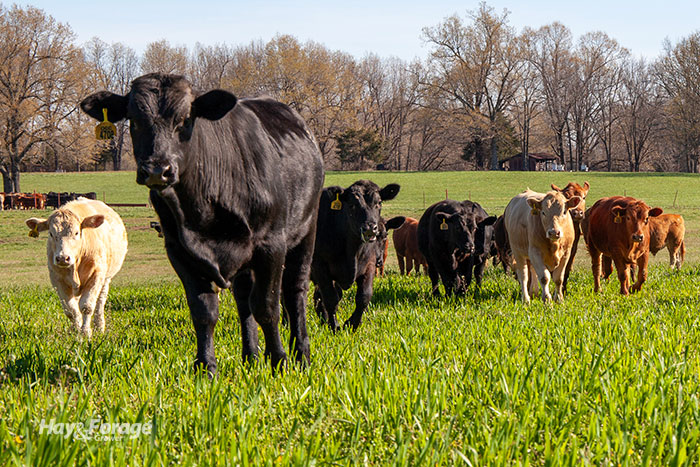
Grazing winter cereals in the spring can provide high-quality forage and eye-popping animal performance when cattle are strategically moved from paddock to paddock.
Winter rye, winter triticale, and winter wheat will all provide more than adequate nutrition to growing beef calves, according to the University of Nebraska’s Mary Drewnoski and Daren Redfearn. Even though there’s not a wrong answer as to which cereal is best, there are some differences between the species.
“Cereal rye can have greater growth during cooler conditions compared to wheat or triticale,” the extension specialists note. “This is the reason it can often provide earlier spring grazing. On the other hand, triticale retains its feed value better into late spring because it doesn’t mature as quickly. This makes it well-suited for hay and silage, or for grazing well into June. If planning on harvesting hay after heading, choose an awnless variety to preserve palatability,” they add.
When managed correctly, growing calves can gain 3 to 4 pounds per day on cereal forage. To optimize performance of cattle with high nutritional requirements, such as growing calves or lactating cows, Drewnoski and Redfearn emphasize the importance of keeping the grass plants from becoming too mature.
Keep pastures short
Lactating cows need to be on a steady to increasing plane of nutrition as they approach breeding, so maintaining forage quality hinges on not letting the cereal grass reach heading before it is grazed.
“Begin grazing when the plants are about 5 to 6 inches tall and manage to keep the maximum height at 8 to 10 inches,” the beef specialists recommend. “Rotational grazing with higher stocking densities can assist with keeping the plant maturity more uniform and reduce selective grazing. Look ahead one or two pastures and move based on how the grass is recovering in those pastures.”
Cereal forages grow fast and quickly begin to regrow after a grazing event. A common mistake when spring grazing cereals is letting the grass get ahead of the cattle. This can be prevented by boosting the stocking density as the spring progresses. Doing so will help ensure the cattle keep up with the rapid forage growth.
Stocking density can be increased either by adding more cattle or reducing the number of acres being grazed. Drewnoski and Redfearn suggest a good starting point is about one cow per two acres or one stocker calf per one acre in early spring and adding animals from that point.
Some cautions
Like most cool-season grasses in early spring, cereal forages are high in potassium. As such, there is a need to provide supplemental magnesium to the mineral mix because potassium interferes with magnesium availability to the animal. It’s a low magnesium condition that results in grass tetany.
A free-choice mineral with a targeted 4 ounces per day intake needs to contain at least 10% magnesium to prevent grass tetany in lactating cows and 5% magnesium to boost gains in stocker calves.

